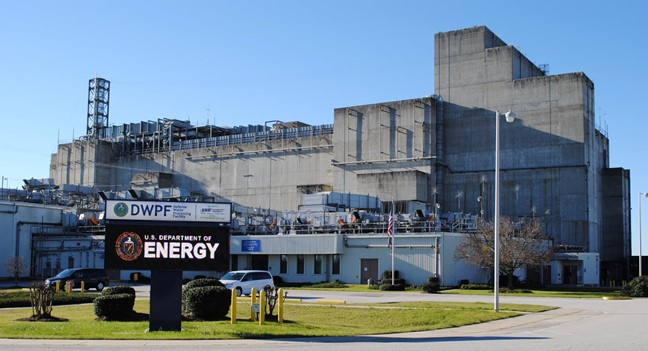Wisconsin’s Kewaunee nuclear power plant, which shut down in 2013, is being transitioned to decommissioning. (Photo: Wikimedia Commons)
The Nuclear Regulatory Commission on Wednesday approved a proposed rule to amend its regulations for nuclear power plants that are transitioning from operations to decommissioning. After changes requested by the NRC commissioners are made by agency staff, the proposed rule will be published in the Federal Register, initiating a 75-day comment period.
Artist rendering of a NuScale SMR plant.
On the sidelines of the COP26 Conference in Glasgow yesterday, John Kerry, the Biden’s administration’s special presidential envoy for climate, joined Romanian president Klaus Iohannis to announce plans to build a first-of-a-kind small modular reactor plant in Romania. The SMR technology is to be provided by NuScale Power, based in Portland, Ore.
(Source: Peter Schrank/The Economist)
“Where nuclear power was once a source of unity for Europe, today it is a source of discord.” So states The Economist’s October 30 “Charlemagne” column—a regular source of commentary on European politics in the weekly publication—before deftly dissecting nuclear power’s continental divide and picking a winner.
eVinci micro reactor core, (Illustration: Westinghouse)
A recently completed feasibility study by Westinghouse Electric Company and Bruce Power concludes that the eVinci microreactor is capable of providing cost-competitive clean energy to decentralized, off-grid markets in Canada.
EnergySolutions announced the stock transfer of Kewaunee from Dominion Energy in May 2021 and is in the process of approval by the U.S. Nuclear Regulatory Commission and Public Service Commission of Wisconsin.
Contrary to what some believe, the nuclear industry, far from fading into the past, is experiencing an ongoing evolution. New generations of nuclear power technologies move closer to reality, while traditional nuclear generators are reaching retirement and entering decommissioning. As research on Small Modular Reactors (SMR) advances, prototype production is in full swing with the potential for SMRs to eventually replace the current fleet. And while technology advances, so do markets seeking to deal with the challenge of climate change in the face of the retirement of the currently operating nuclear power plants in the U.S. In an exceptional recent win for nuclear power, the Illinois legislature approved $700 million in subsidies for the Byron and Dresden nuclear stations over the next five years. It remains to be seen if this will be an isolated move in today’s nuclear plant lifecycle.
The Defense Waste Processing Facility at the Savannah River Site in South Carolina. (Photo: DOE)
The Department of Energy’s Office of Environmental Management (EM) has awarded Savannah River Mission Completion (SRMC), of Lynchburg, Va., the Integrated Mission Completion Contract at the Savannah River Site near Aiken, S.C. The single-award, master indefinite delivery/indefinite quantity contract has an estimated contract ceiling of approximately $21 billion over a 10-year ordering period, with cost-reimbursement and fixed-price task orders to define the contract performance.
EM crews demolish Building 9207 in the former Y-12 Biology Complex at Oak Ridge earlier this year. (Photo: DOE)
The Department of Energy’s Office of Environmental Management (EM) has awarded a 10-year, $8.3 billion contract to United Cleanup Oak Ridge (UCOR), of Germantown, Md., for the cleanup of the Oak Ridge Reservation in Tennessee, including the Y-12 National Security Complex, Oak Ridge National Laboratory, and the East Tennessee Technology Park (ETTP).



















